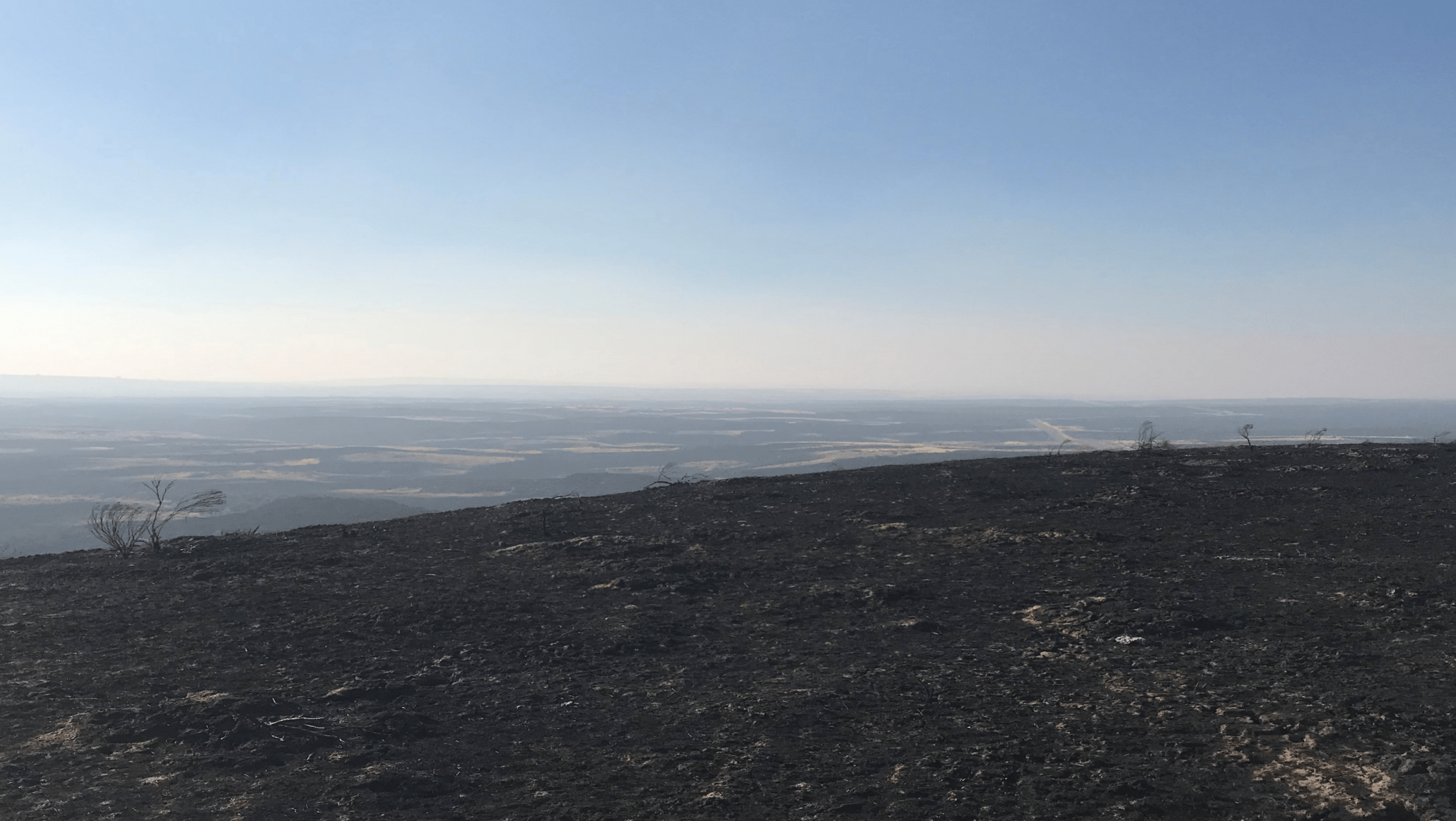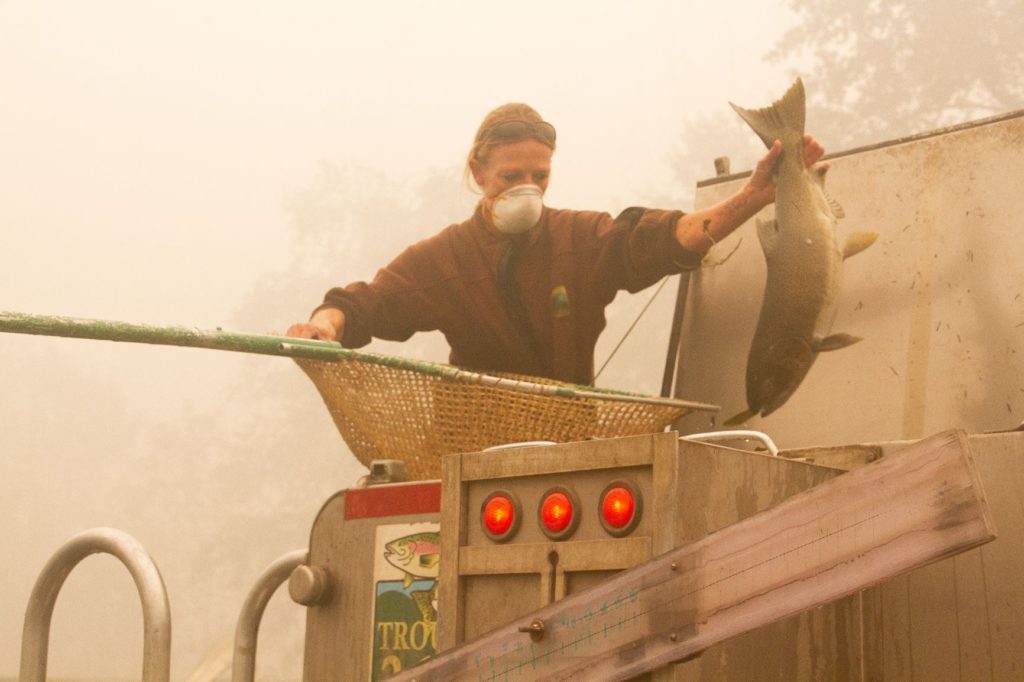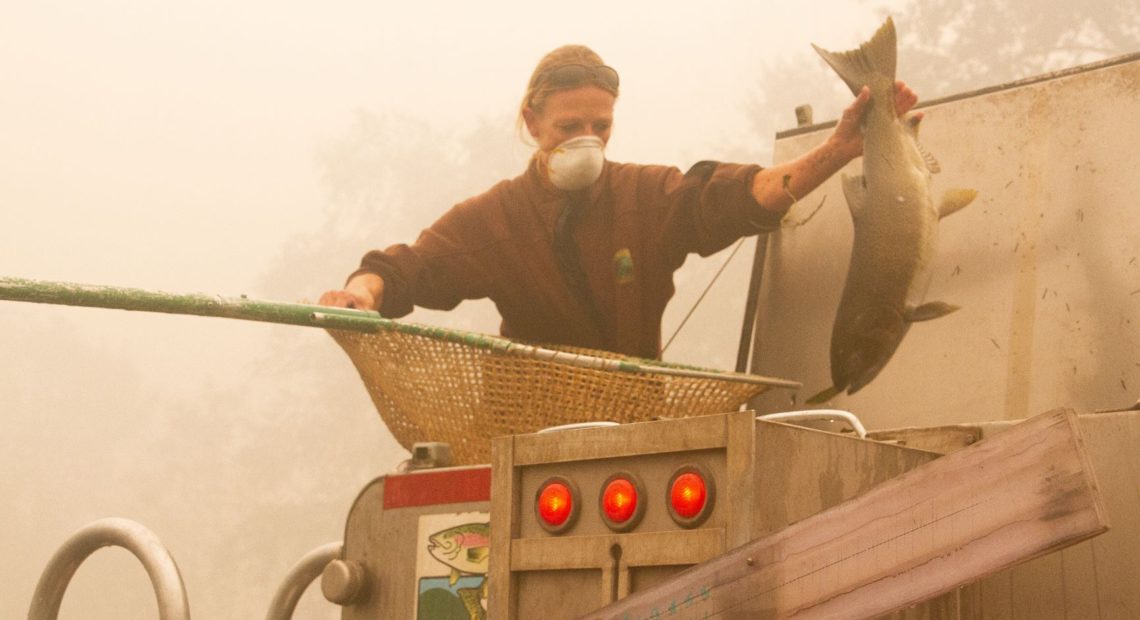
We Can See Clearly Now The Smoke Is Gone: 2020 Fires Greatly Affected Northwest Wildlife Habitat
Listen
Ecologists walked the blackened landscape that just months before supported healthy shrub steppe plants at Washington’s Swanson Lakes Wildlife Area. They pressed their thumbs into the ground and plucked dead bunchgrass crowns out of the burned earth.
“They’re ash below the soil surface. That means they’re not going to regenerate,” Kurt Merg, a Washington Department of Fish and Wildlife vegetation ecologist, says.
The Whitney Fire burned hot through almost the entirety of the Swanson Lakes Wildlife Area in eastern Washington’s Channeled Scablands. Merg says the fire likely destroyed seeds in the ground – seeds that could have regrown and helped the area recover. Now, it’s a “moonscape.” Invasive, flammable weeds could take over and become a source of weeds for nearby healthy areas.
“It’s just kind of devastating to think about,” Merg says. “Converting what was formerly good habitat into what is now a threat to the rest of the landscape around it.”
Swanson Lakes was one of three Washington wildlife areas badly damaged in this year’s wildfire season. Merg recently presented on the damage to the Northwest Power and Conservation Council.
“In this year of, well, exceptions, we’ve been handed an unprecedented level of damage to our wildlife mitigation program,” Merg said to the Council.
Disproportionate Impact And Sage Grouse
Even in past years when more acres have burned in the state – like in 2015 – Merg said this year’s fires had a disproportionate impact on the state’s mitigation efforts.
“It’s quite a heavy impact that we have not yet experienced,” he said.
Other scarred habitats in Washington include Sagebrush Flats Wildlife Area, which burned in the Pearl Hill Fire, and the Wenas Wildlife Area during the Evans Canyon Fire.
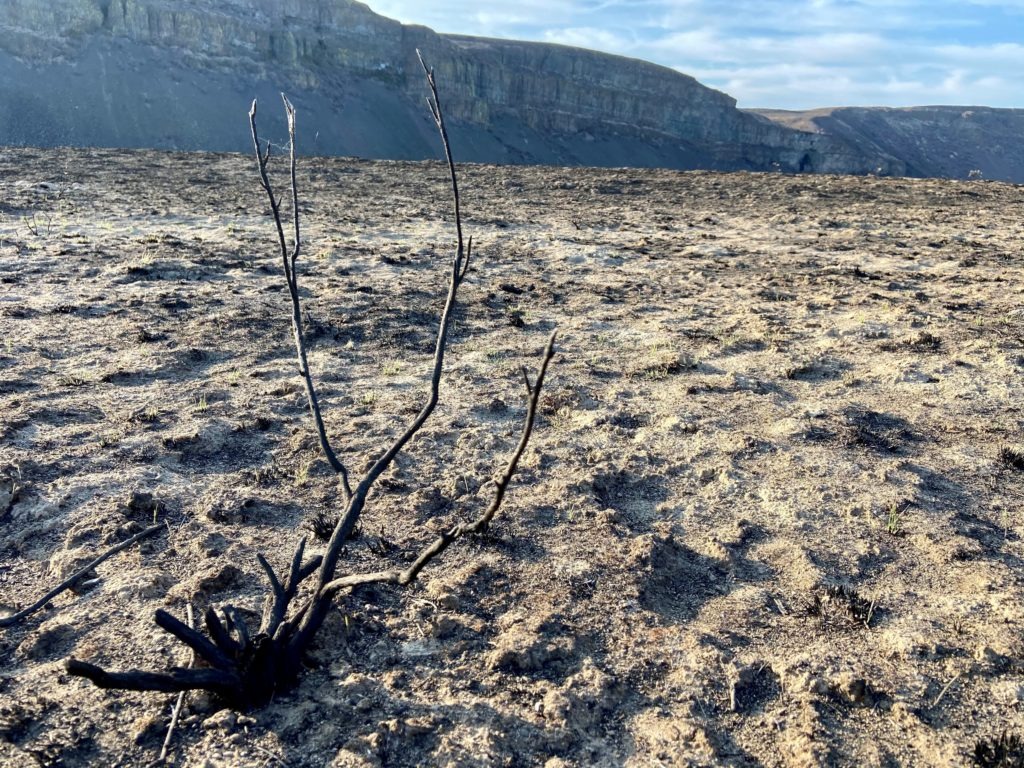
In one experimental plot, many of the sagebrush in this Moses Coulee area of central Washington were burned to a crisp during the September 2020 Pearl Hill Fire. It can take decades for sagebrush to fully recover after an extremely intense wildfire. CREDIT: Courtney Flatt/NWPB
All three areas have acres that are part of a collaboration with the Bonneville Power Administration wildlife mitigation program.
“Bonneville’s mitigation agreements and conservation easements deal with the possibility of natural disasters. Bonneville provides a reasonable amount of funding for Operations and Maintenance for usual land and habitat management activities. We are in contact with state agencies,” BPA spokesman David Wilson says.
These wildlife areas support important habitat for rangeland species, like the greater sage grouse, which is threatened in the state.
At Swanson Lakes, sage grouse habitat was so damaged this year that biologists have recommended the birds now be listed as endangered in Washington.
The blackened sagebrush skeletons won’t be able to support the experimental sage grouse population at Swanson Lakes.
“Frankly, we’re not sure if the sage grouse will persist or, indeed, whether we should try against this sort of overwhelming odds,” Merg says.
He says the department will try to reseed core areas with sagebrush. The forecasted wetter La Niña conditions this winter will be a challenge for the many species that rely on these now-burned ecosystems.
In all, Merg estimates more than $10 million worth of damage across these areas. That ranges from fence damage, including elk fences, to bird feeders to damage to headquarter buildings.
Oregon Fish Hatcheries
In Oregon, eight fish hatcheries were evacuated. Four incurred damages during the state’s Labor Day fires, the largest of which were in the Cascades.
“For several of these hatcheries, our staff were able to – with escorts – safely get back into the hatcheries and keep fish alive during the evacuation,” says Bernadette Graham Hudson, the west region manager with Oregon’s Department of Fish and Wildlife.
Those hatcheries included Marion Forks Hatchery, Salmon River Hatchery and Clackamas Hatchery.
The Klamath Hatchery in southwest Oregon burned in the Two Four Two Fire. The hatch house, shop and office were completely burned. Graham Hudson says about 50,000 triploid brown trout in the “early rearing stages” inside the hatch house died. Around 20,000 of those fish were supposed to head to Diamond Lake. Fish in the outside raceways survived.
The Minto Fish Facility on the North Santiam River had some minor damage to the fish facility, including smoke issues inside the building. A storage shed and several vehicles burned. The facility is owned by the Army Corps of Engineers.
“Our staff were able to – during the bad air quality period, when the fires were still ongoing – they were able to get back into the facility to complete the spawning of the adult spring chinook,” Graham Hudson says. “We took those eggs to Roaring River Hatchery to keep them safe.”
Oregon’s “hardest hit hatchery” was Rock Creek on the North Umpqua River, a near-complete loss, Graham Hudson says. All buildings and employee housing were destroyed or severely damaged by the Archie Creek Fire.
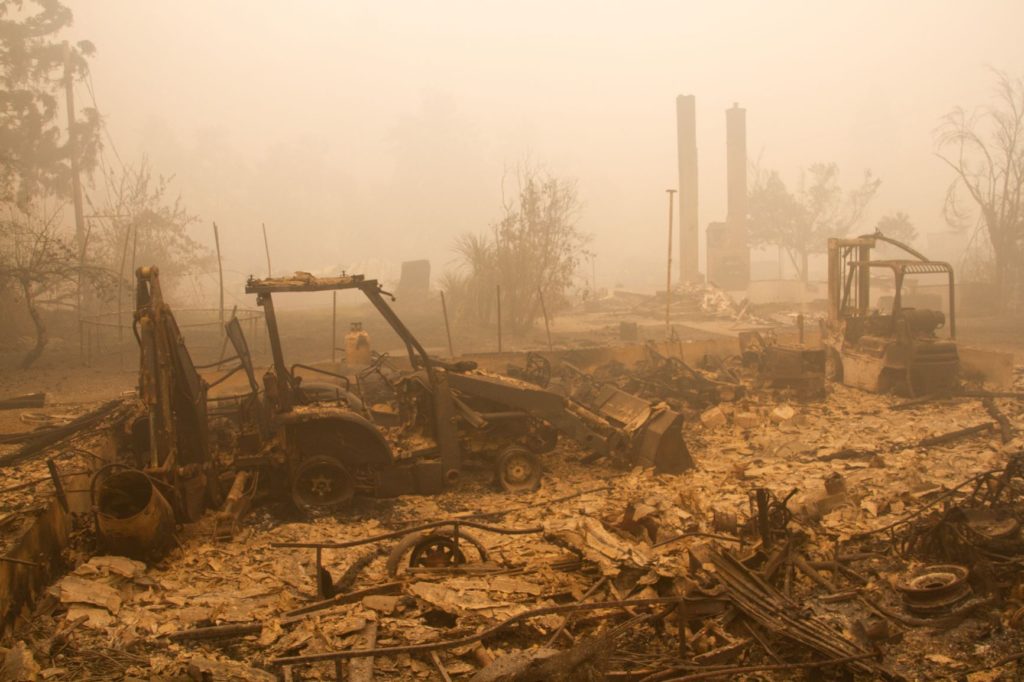
Rock Creek Hatchery on the North Umpqua River in southwest Oregon sustained the most severe damage of any hatchery during Oregon’s unprecedented 2020 wildfires. CREDIT: Matt Hill
“After the fire, our staff was able to get back in and remove the spring chinook and summer steelhead adults that survived … and transfer those to Cole Rivers Hatchery to be spawned,” Graham Hudson says.
She said about 700 juvenile coho salmon survived. Almost all the other young fish were lost, — around 400,000 — including winter steelhead, rainbow trout and spring chinook. The coho will be raised in Roseburg, Oregon, at Eastwood Elementary’s fish rearing facilities.
“We’re still working on our cleanup efforts there. Also evaluating our options for continuing the productions and potentially rebuilding – looking at costs, water quality concerns and the feasibility of rebuilding,” Graham Hudson says.
At the Leaburg Hatchery on the McKenzie River, she said a “good Samaritan” stayed as the Holiday Farm Fire came near, fending it off from many buildings. The domestic well and pump house were damaged, which will prevent staff from living at the hatchery.
During the fires, the level of Leaburg Lake was lowered because of concerns about debris coming downstream. Staff released more than 1 million fish that came from that basin. Those fish were yearling spring Chinook, summer steelhead and rainbow trout.
“Those fish would not have survived very long without new incoming fresh water,” Leaburg hatchery manager Erik Withalm said in a news release. “We pulled tail screens to get fish out as quickly as we could before evacuating again as the fire approached. Fortunately, structures at the facility sustained only minor damage with only the wellhouse and a tractor burning.”
Some fish at the Leaburg Hatchery that originally came from other basins were not released. Those spring and fall Chinook and summer steelhead died.
An estimated 5-10% of the fish did not make it out before the hatchery lost water.
ODFW is removing debris and other hazardous waste, like fire retardants, that could enter streams. It’s prioritizing recovery efforts for threatened and endangered species habitat, to prevent invasive grasses from taking over and in areas “where we can retain wood on the landscape,” Graham Hudson says.
During the weeks of poor air quality, Steller sea lion removal at Bonneville Dam was delayed. The efforts to save salmon and kill the predators have been controversial. The department says Steller sea lions can eat up to 44% of the Columbia River’s spring chinook salmon run.
Related Stories:
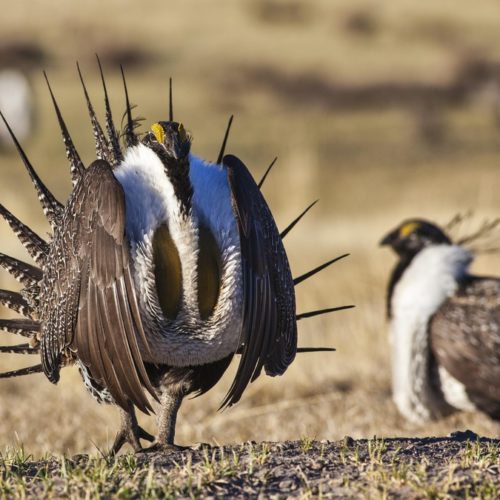
‘It Sometimes Is Depressing’: Conservation Moves Forward, And Uphill, For Washington’s Sage Grouse
Sage grouse in the Columbia Basin are cut off from others in Oregon and southern Idaho, making them unique in their recovery. In 1998, Washington listed its sage grouse as threatened. They now occupy around 8 percent of their historic range in the state.
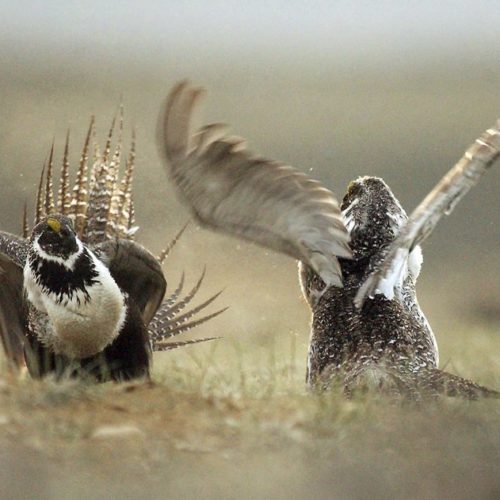
Numbers Of Imperiled Sage Grouse Tumble Even Lower Across The West
Grouse numbers also continued to drop in 2019 in Oregon, Idaho and Wyoming. Weather can affect populations from year to year, and wildlife officials say those short-term cycles are most directly responsible for the recent declines.

Could Relocating Sage Grouse Save The Birds In Washington?
Moving imperiled sage grouse from one spot to another can be hard on the birds. But research from Washington State University suggests that after a restless adjustment period, the birds eventually get used to their new homes.

